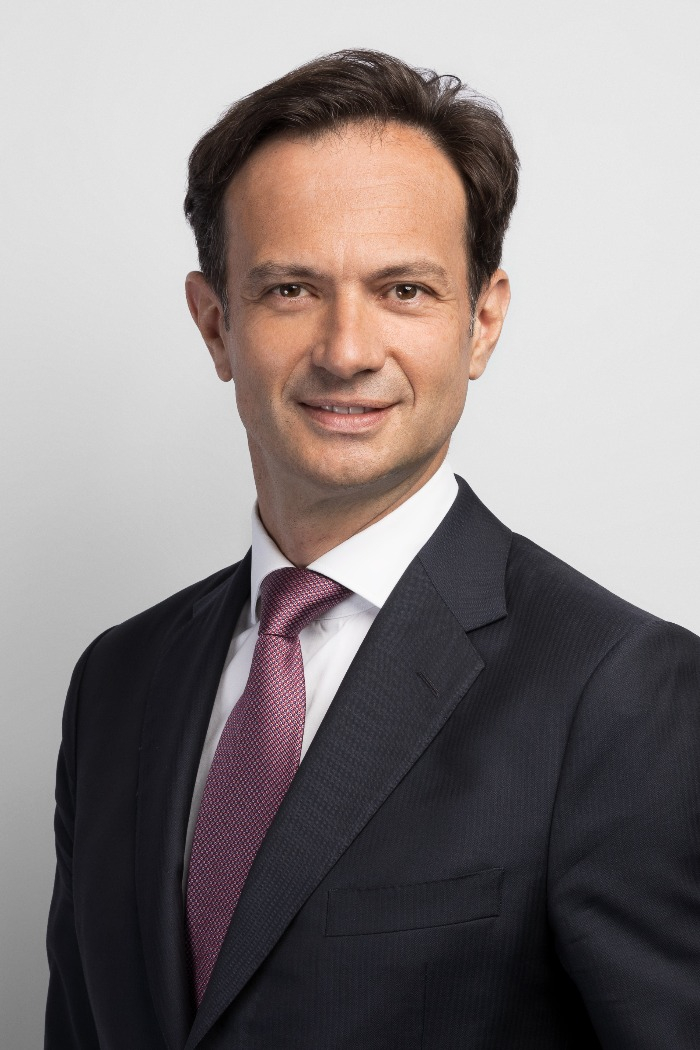Data centers in European core cities are promising, Principal head says
Lack of supply creates opportunities unique to data center hubs in Frankfurt, London, Amsterdam and Paris
By Mar 16, 2022 (Gmt+09:00)
S.Korea's LS Materials set to boost earnings ahead of IPO process


CarlyleŌĆÖs Rubenstein sees commercial real estate undervalued


Samsung Electronics' key M&A man returns; big deals in the offing


Money pours in for technology to reshape Korean restaurants


CJ CheilJedang to sell feed, livestock unit for $1.4 bn



Critical data center hubs have emerged in European major cities with dramatic growth in data consumption, and the facilities are rising as promising assets for investors, said Guillaume Masset, head of transactions & asset management at Principal Real Estate Europe, the European real estate investment management arm of Principal Global Investors LLC, in an interview with The Korea Economic Daily on March 16.
ŌĆ£Enterprises, cloud service providers and colocation groups, which are commercial data centers where businesses can rent space for servers, drive demand for these facilities based in Frankfurt, London, Amsterdam and Paris (the FLAP markets). Therefore, a lack of supply creates an opportunity unique to Europe,ŌĆØ he said.
The FLAP markets dominate EuropeŌĆÖs data center landscape as the facilities need an accessible power supply and a large population center, he explained. More than $100 billion flowed into data centers over the past 10 years as the investments are more accessible and better understood nowadays, he added.
Principal Global Investors manages assets of $590.6 billion in equities, fixed income, real estate, currency management and stable value funds. The US asset management firm invests on behalf of over 800 institutional clients in more than 80 markets as well as retirement plans and individual clients.
Mr. Masset is responsible for the transaction and asset management activity of the group, and is also regional head for Benelux and Southern Europe. Previously, he started his career at French conglomerate Bollor├® as a financial controller for East Africa and served as structuring and financing director at real estate investment firm STAM Europe.
The following is a transcript of the interview with Mr. Masset.

Ō¢▓Why are data centers concentrated in the FLAP markets?
ŌĆ£Linking data networks across geographic borders creates a reliance on the fiber cables that connect the globe. For data centers in Europe, the most important of these international cables links New York to London, then to a number of major European cities before connecting to Asia and Africa. The further a data center is from these international fiber connections, the more latency and delays in data transmission, which is why the FLAP markets have become attractive for data centers.ŌĆØ
ŌĆ£Also, each of these core markets is a population center with substantial business activity and intensive requirements for data storage and processing. With data processing speed a top priority for both businesses and consumers, the locations of these hubs help provide low latency for users.ŌĆØ
Ō¢▓What are the characteristics unique to each core city?┬Ā
ŌĆ£Frankfurt has strong environmental protections and is space constrained. In the third quarter of 2020, its vacancy rate was low, which is unlikely to change any time soon. The city benefits from a strong financial services presence and serves as a gateway to the East.ŌĆØ
ŌĆ£London is the largest data center market in Europe and home to many corporate headquarters. West of the city, hyperscale cloud service providers have set up zones that serve as hubs for data centers to provide their services. More recently, the north and east of London have attracted data center interest, including that of Google. London has roughly 711 megawatts of commissioned capacity, representing approximately 41% of total capacity in the FLAP markets.ŌĆØ
ŌĆ£Amsterdam struggles with a lack of power, limiting the supply of new data centers. Recently, a moratorium against the development of new facilities has been lifted and interest in the market can start to grow again. The government remains positive on the data center industryŌĆÖs growth, citing some 30 anticipated projects scheduled in the next few years.ŌĆØ
ŌĆ£Paris is the smallest of the FLAP markets and has high power costs but remains significant in Europe. In 2019, the government created a new tax incentive for the development of data centers that would halve the price of electricity for certain projects, assuming they abide by specified environmental standards. The market has seen growing interest from both cloud service providers and enterprise customers. Vacancy rates remain low.ŌĆØ
ŌĆ£While not as big as the other four markets, Dublin is considered an emerging core region. The city has benefitted from two points: its geography between the big markets of the US and the UK; and a corporate tax regime that has attracted sizeable corporations, particularly in the US. Hyperscalers, the largest cloud service providers, maintain a big presence in Dublin, home to Facebook and several other data-intensive companies.ŌĆØ
Ō¢▓Why are data centers in these markets more attractive assets than those in other regions?
ŌĆ£Because new entrants are faced with a number of challenges. The complexities of the space require high-level expertise. Finding ideal locations can be difficult as data centers must be close to both an accessible power supply and a large population center. They also require significant ongoing infrastructure investment, including data protection, technology upgrades, chillers and backup generators.ŌĆØ
ŌĆ£But the biggest hurdle to building a data center in Europe is gaining access to a suitable power supply, largely due to regulatory limitations on energy consumption. While this may seem like an industry headwind, the reality is that restrictions and other roadblocks to entry have created an imbalance between supply and demand, essentially placing a higher value on existing data centers and making them more attractive investments. This supply-demand imbalance is not nearly as ubiquitous in the US or other big data center markets as it is throughout Europe.
Ō¢▓Data centers in the FLAP markets seem overvalued as the markets have proven difficult to penetrate. Are there any other markets that are more accessible?
ŌĆ£Many second-tier players in Europe are gaining attention as users seek other options for low-latency, high-bandwidth networks. Cities like Zurich and Milan that have large populations, access to relatively affordable power, and good fiber connectivity are quickly evolving and becoming more attractive.ŌĆØ
ŌĆ£As South America becomes increasingly linked with Europe, Madrid and Barcelona have become prominent locations. Marseille is a growing hub, with its dense population of fiber lines, and much of the connectivity to Africa is routed through the city.ŌĆØ
ŌĆ£Additionally, many companies choose to have their data center located in their home countries for regulatory or data security reasons. This has sparked new centers outside Frankfurt in Germany, a country with strict data privacy laws.ŌĆØ
Ō¢▓Data centers are relatively new compared with other commercial real estate assets. What do you think of the investment risks?
ŌĆ£More than $100 billion flowed into data centers over the last 10 years as institutional investors recognized the secular opportunity this sector presents. As data centers become more ŌĆśinstitutionalized,ŌĆÖ there has been more contract standardization and an increase in leases through triple net leases (NNNs), which pass operational costs from landlord to tenant and secures steady cash flow. Today, these investments are more accessible and better understood than in the past.ŌĆØ
Ō¢▓Do you predict these Europe-based data centers will remain attractive in a long term?
ŌĆ£Of course, we do. With more European data center assets in the hands of institutions ŌĆö and the industry consolidates with M&A activity ŌĆö┬Ā these properties will only become more valuable. We are committed to expanding assets in core markets where there are opportunities to benefit from the supply-demand imbalance, but are also making targeted investments in second-tier European markets with growth potential. We believe investments in this industry will continue to add long-term value to diversified real estate portfolios.ŌĆØ
Write to Chang Jae Yoo at yoocool@hankyung.com
Jihyun Kim edited this article.
-
 Pension fundsKorea Post to invest in overseas data centers and warehouses
Pension fundsKorea Post to invest in overseas data centers and warehousesFeb 07, 2022 (Gmt+09:00)
2 Min read -
![[ASK 2021] Cross-border Investments in Data Center, Life Science and Other Niche Sectors](/data/ked/image/2021/11/02/ked202111020048.145x94.0.png) Sera Global[ASK 2021] Cross-border Investments in Data Center, Life Science and Other Niche Sectors
Sera Global[ASK 2021] Cross-border Investments in Data Center, Life Science and Other Niche SectorsNov 02, 2021 (Gmt+09:00)
1 Min read -
 IPOsUS data centers-backed REIT seeks $90 mn Korean IPO in 2021
IPOsUS data centers-backed REIT seeks $90 mn Korean IPO in 2021Jan 28, 2021 (Gmt+09:00)
1 Min read -
 Shinhan backs AMP CapitalŌĆÖs $763 mn US data center acquisition
Shinhan backs AMP CapitalŌĆÖs $763 mn US data center acquisitionFeb 03, 2020 (Gmt+09:00)
1 Min read


